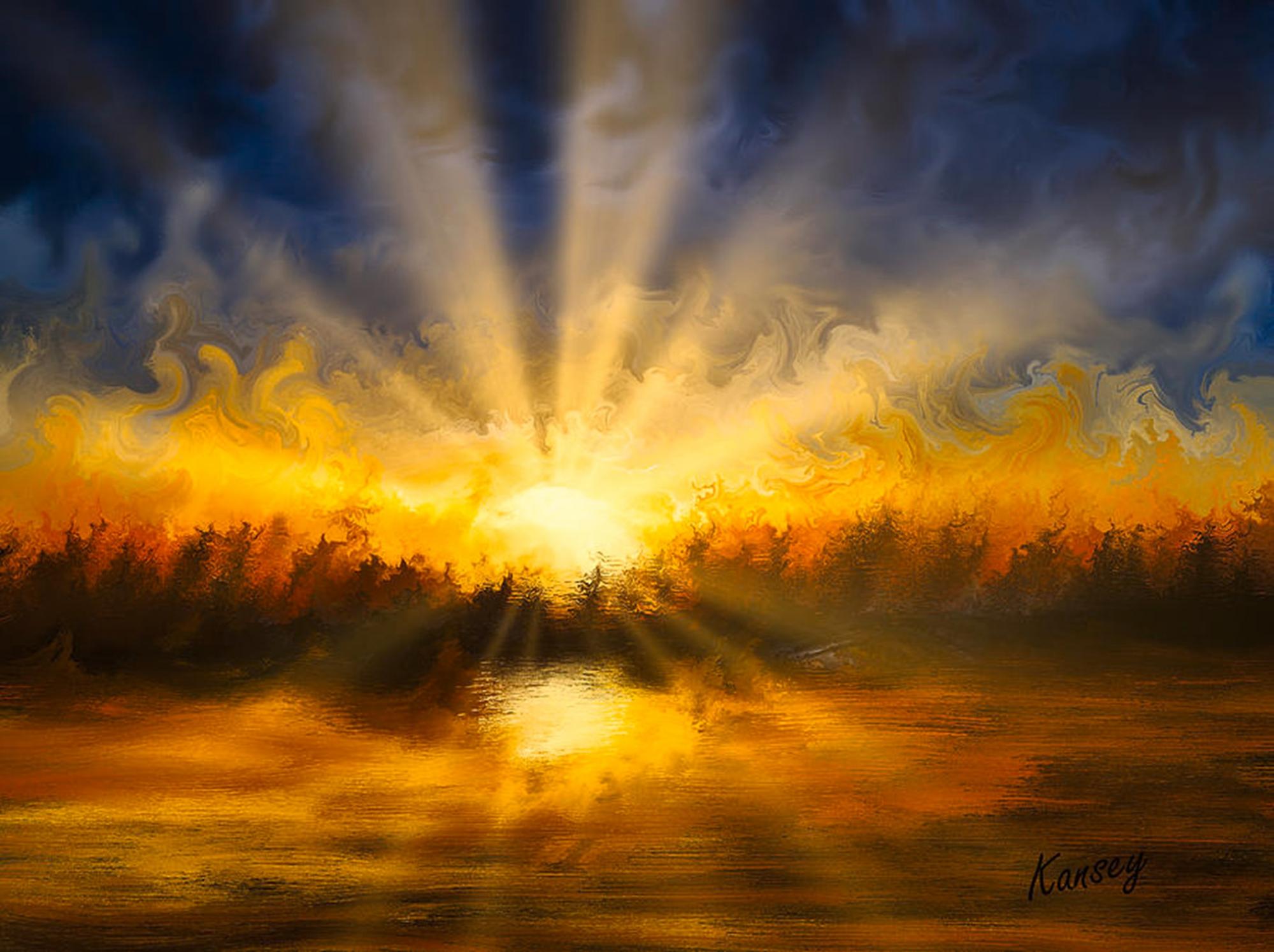Created by Kaitlynn Wolffe on Mon, 05/06/2024 - 10:12
Description:
The rising sun – symbolic of a new beginning as the world re-enters life. The impressionist style works to convey not only the objective reality but also the emotional and spiritual responses aroused by the heart at such a scene. As an integral part of nature, the sun paints a picture of various themes. As the rising sun depicts a new beginning and hope, as does the setting sun depicts an end. The course of its journey as a whole, from its start to finish, exemplify the idea of change, “the only constant,” as it defines the life on earth and shapes its course (Jani 2). With change always shifting and creating an unpredictable future for all of life, death can perceived as another change. Rather than an end, death can be seen as another transformation, akin to the sun setting before rising again. One such poet who encompasses this theme is Clare Harner in her poem “Immortality,” or “Do Not Stand at my Grave and Weep.” Written in 1934, this short poem is written from the perspective of someone who has already passed on. The poem explores the pain one feels after losing a dear loved one, as they mourn and grieve their loss. Yet, the speaker instead conveys a message of hope and reassurance, telling the reader that, through dying the speaker has become a part of the whole world around us.
“Do Not Stand at my Grave and Weep” begins with the titular line. The speaker is straightforward as they describe that “they do not sleep” under the earth from where the reader is crying (Harner 2). The speaker then goes on to explain what has happened to them after their death; they have become a part of all of nature, found within all corners of life: “I am a thousand winds that blow./I am the diamond glints on snow./I am the sunlight on ripened grain./I am the gentle autumn rain” (Harner 3-6). The speaker has found death as a freedom and a release – a transformation rather than an ending. Although they met the end of their “human form,” the speaker was able to live on within the natural world, essentially attaining immortality. Supporting this, the poem explicitly reiterates to the reader, “Do not stand at my grave and cry;/I am not there./I did not die” (11-13). Harner’s poem works to serve as a comfort and a positive shift from the often-sad understandings of death, instead using it to reassure and provide hope to those alive that, despite an eventual end to their mortal lives, they will not die, but continue to live on through nature. For this, we must learn to accept change: “One must learn to change from nature: seasons change, the flora, fauna, and animals adapt to changes and move on” (2). No matter how averse we are to change, it is within the very air we breathe. Even if this is a fantasy, and death truly becomes an end, humans are still made immortal through our actions: “[Man] lives on…through his [works]…through his care and compassion showered on every person associated with him….He will continue to live on as TS Eliot rightly said: ‘And to make an end is to make a beginning. The end is where we start from’” (Jani 2). Although change, and death, are frightening, one must be sure to look to the future as press on – press on and make a life that is made beautiful by change, by its end, and embrace whatever comes after.
Works Cited
“Clare Harner.” Poems by the Famous Poet, AllPoetry, 2019, allpoetry.com/Clare-Harner.
Dauphinais, Johanne. Sun Rays. 2017. FineArtAmerica.com, https://fineartamerica.com/featured/sun-rays-johanne-dauphinais.html.
Jani, Nikunj J. “Beginnings, ends and newer beginnings.” Journal of Integrated Standardized Homoeopathy, vol. 6, 7 Apr. 2023, pp. 1–2, https://doi.org/10.25259/jish_26_2023.
Norsworthy, Scott. Facts about Clare Harner Lyon, 3 Feb. 2021, clareharner.blogspot.com/2021/02/facts-about-clare-harner-lyon.html.


